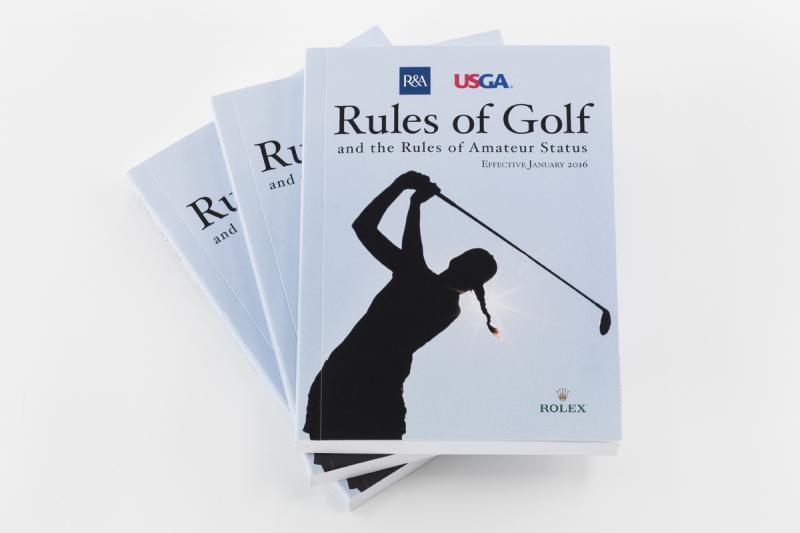It seems that every time I play golf, there’s always a new situation that gives my regular foursome a pause to question the rules. Since no one in our group carries a USGA Rule Book, we have a very loose interpretation of the rules. That interpretation becomes more clouded as beverages are consumed and the round moves to the back nine, where judgment is often left to whomever is the designated driver - after the nineteenth hole.
Case in point (true story): What if someone’s ball ends up in goose droppings on the fairway, and no one knows if he can move the ball without a penalty stroke, take a free drop or call the clubhouse for a hazmat suit to play the ball as it lies (more on that later).
But first, before we consult the USGA Rule Book, I was curious how the United States Golf Association actually got its start years ago. It all began in 1894, when two prestigious golf clubs, the St. Andrews Golf Club of New York and the Newport Golf Club of Rhode Island, held invitational tournaments at each course. When W.G. Lawrence, a member at Newport, won his tournament and Laurence Stoddard, a member at the St. Andrews Club won his tournament, both clubs claimed to have the National Amateur Champion as a member of their club. The feud spilled over to three other golf clubs in high society (Shinnecock, New York; The Country Club, Brookline, Massachusetts, and the Chicago Golf Club), that also wanted national recognition. So a truce was enacted.
In December of that year, the five clubs sent representatives to a meeting in New York City to find a solution to the National Amateur Championship title feuding problem. And the USGA was born. The first orders of business were to standardize golf rules, set up a national men’s and women’s Amateur Open Championship and to create the U.S. Open, allowing amateurs and professionals to play side by side in their own championship. Since its birth in 1894, the USGA has grown to be the sole governing body on golf in the United States and Mexico, while also working with their Scottish counterpart, the Royal and Ancient Golf Club of St. Andrews (R&A).
Now back to the rule book. It has only thirty-four rules, is a mere 208 pages including the appendix and index, and is available online to clearly define and explain each rule, definition and situation one might encounter on the course.
So what do you do if your ball ends up in or near goose droppings?
You must remember that the USGA defines loose impediments as the following: “natural objects such as, stones, twigs, loose branches, dung, worms, insects and the casts made by them, provided they are not fixed or growing; solidly embedded or adhering to the ball.” Now that you are clear on the definition of a goose impediment, we can move on to Rule 23, which states: “you may move a loose impediment (see above definition) unless the ball and the impediment are in the same hazard. If you remove the loose impediment and this causes the ball to move, the ball must be replaced (unless your ball was on the putting green), incurring a one stroke penalty.”
So the next time your ball ends up in midst of the above-mentioned goose impediments, you must determine the following, are you in a hazard or on the fairway? (Now stay with me on this.) If you are in a hazard, you cannot move the impediment or clean the ball, even if the goose impediment is adhered to it, without incurring a penalty stroke. On the fairway, I suggest you have the other members of your foursome gather around the goose impediment and help give a ruling, after determining the following:
1. Is the ball resting far enough away from the goose impediment to move the impediment without the ball moving?
2. Is the goose impediment fixed, growing, solidly embedded or adhered to the ball?
I am going out on a limb here and giving my unqualified opinion: If no hazmat suit is available, and the goose impediment is adhered to the ball, you cannot move the impediment - but you can close your eyes and let it fly.
I hope I have cleared up that rule and definition, just in case you encounter a similar problem in the near future. But one thing the USGA did not explain: If you can move the goose impediment and use your club to do so, can you clean the club before you hit the ball without incurring a penalty stroke?
19th Hole Trivia
• This formula about your iron club face is actually in the USGA Rule Book:
(A) Divided by (W+S) is < .0030 squared/in. (it refers to the cross sectional area of the club face…. (A) Divided by the groove pitch (W+S) must be equal to or less than 0.0030 square inches per inch. So, go out to the garage and measure each of your irons.
• And finally, in 1968, croquet-style putting, used mostly by Sam Snead, was made illegal by the USGA.


















































